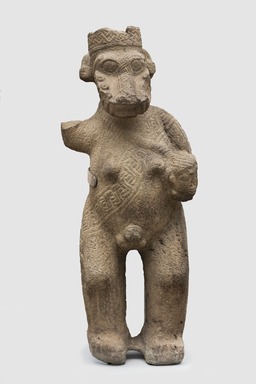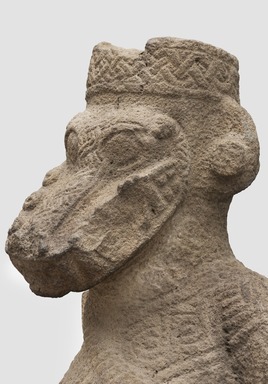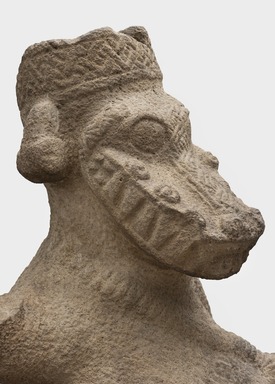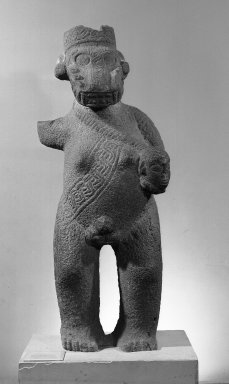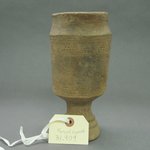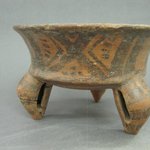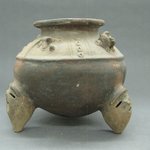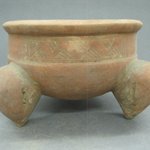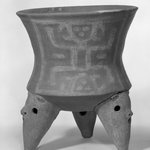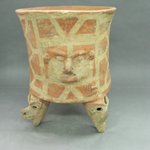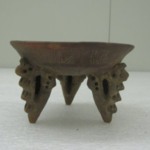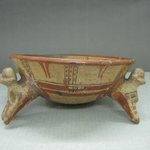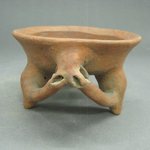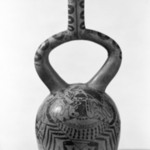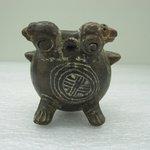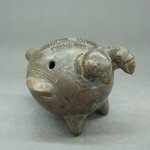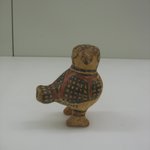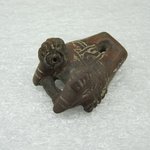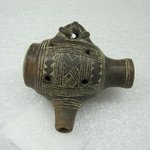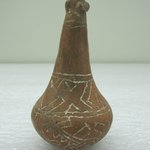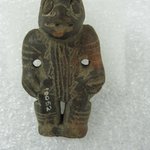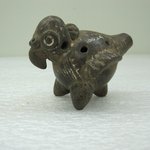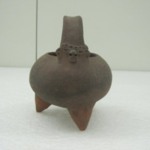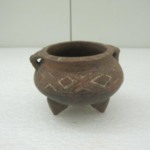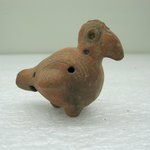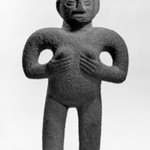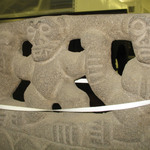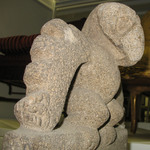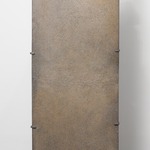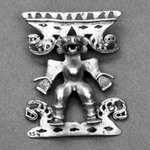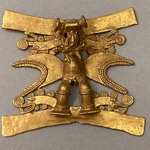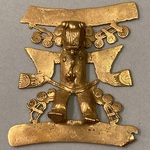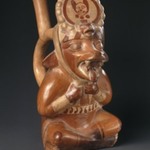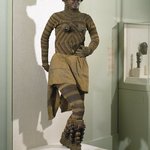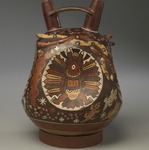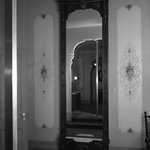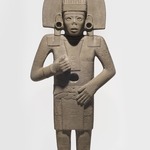Human Figure Wearing Crocodile Mask
Arts of the Americas
This warrior figure is wearing a fearsome crocodile mask, as an actual warrior would have done in the hope of accruing that creature’s power to himself. The figure carries a severed human head, representing a decapitated enemy. (The taking and displaying of trophy heads were common practices in ancient Costa Rica. ) Represented as androgynous, the figure has pronounced breasts, a penis, and testicles. The right arm is missing but appears to have been flexed upward, probably to hold an ax. The hat, mask, ear spools, and shoulder band are covered with incised geometric designs.
MEDIUM
Vesicular (porous) andesite
DATES
700–1000
PERIOD
Late Period V to early Period VI
DIMENSIONS
61 x 24 1/2 x 20 in., 631 lb. (154.9 x 62.2 x 50.8 cm, 286.22kg)
(show scale)
ACCESSION NUMBER
34.5084
CREDIT LINE
Alfred W. Jenkins Fund
CATALOGUE DESCRIPTION
Massive, carved sculpture of a standing male warrior figure with a crocodilian head, probably a mask. The figure carries a severed human trophy head cupped in his left hand and pressed against his body. The figure has pronounced breasts and male organs. His right arm is broken and missing but appears to have been flexed upward, probably holding an axe similar to other sculptures of this genre. The carved and incised crocodilian head has a broad, flat snout with visible fangs and teeth. The eyes are oval in shape and the snout is decorated with incised scrollwork. The figure wears ear spools, a hat, and bandolier decorated with incised geometrical designs.
Condition: right arm and part of the hat are broken and missing.
MUSEUM LOCATION
This item is not on view
CAPTION
Central Caribbean. Human Figure Wearing Crocodile Mask, 700–1000. Vesicular (porous) andesite, 61 x 24 1/2 x 20 in., 631 lb. (154.9 x 62.2 x 50.8 cm, 286.22kg). Brooklyn Museum, Alfred W. Jenkins Fund, 34.5084. Creative Commons-BY (Photo: Brooklyn Museum, 34.5084_overall_PS11-1.jpg)
IMAGE
overall, 34.5084_overall_PS11-1.jpg. Brooklyn Museum photograph, 2022
"CUR" at the beginning of an image file name means that the image was created by a curatorial staff member. These study images may be digital point-and-shoot photographs, when we don\'t yet have high-quality studio photography, or they may be scans of older negatives, slides, or photographic prints, providing historical documentation of the object.
RIGHTS STATEMENT
Creative Commons-BY
You may download and use Brooklyn Museum images of this three-dimensional work in accordance with a
Creative Commons license. Fair use, as understood under the United States Copyright Act, may also apply.
Please include caption information from this page and credit the Brooklyn Museum. If you need a high resolution file, please fill out our online
application form (charges apply).
For further information about copyright, we recommend resources at the
United States Library of Congress,
Cornell University,
Copyright and Cultural Institutions: Guidelines for U.S. Libraries, Archives, and Museums, and
Copyright Watch.
For more information about the Museum's rights project, including how rights types are assigned, please see our
blog posts on copyright.
If you have any information regarding this work and rights to it, please contact
copyright@brooklynmuseum.org.
RECORD COMPLETENESS
Not every record you will find here is complete. More information is available for some works than for others, and some entries have been updated more recently. Records are frequently reviewed and revised, and
we welcome any additional information you might have.
What is this?

This statue was made between the 8th to the 11th century by the indigenous people in the Central Caribbean in the region of Costa Rica. It represents a male warrior wearing a crocodile mask. The figure has pronounced breasts and male genitalia. His right arm is broken and missing but appears to have been flexed upward, probably holding an axe similar to other sculptures of this genre. The carved and incised crocodilian head has a broad, flat snout with visible fangs and teeth. Scholars suggest that the statue could have been used as a kind of mask during ritual.
Stone?
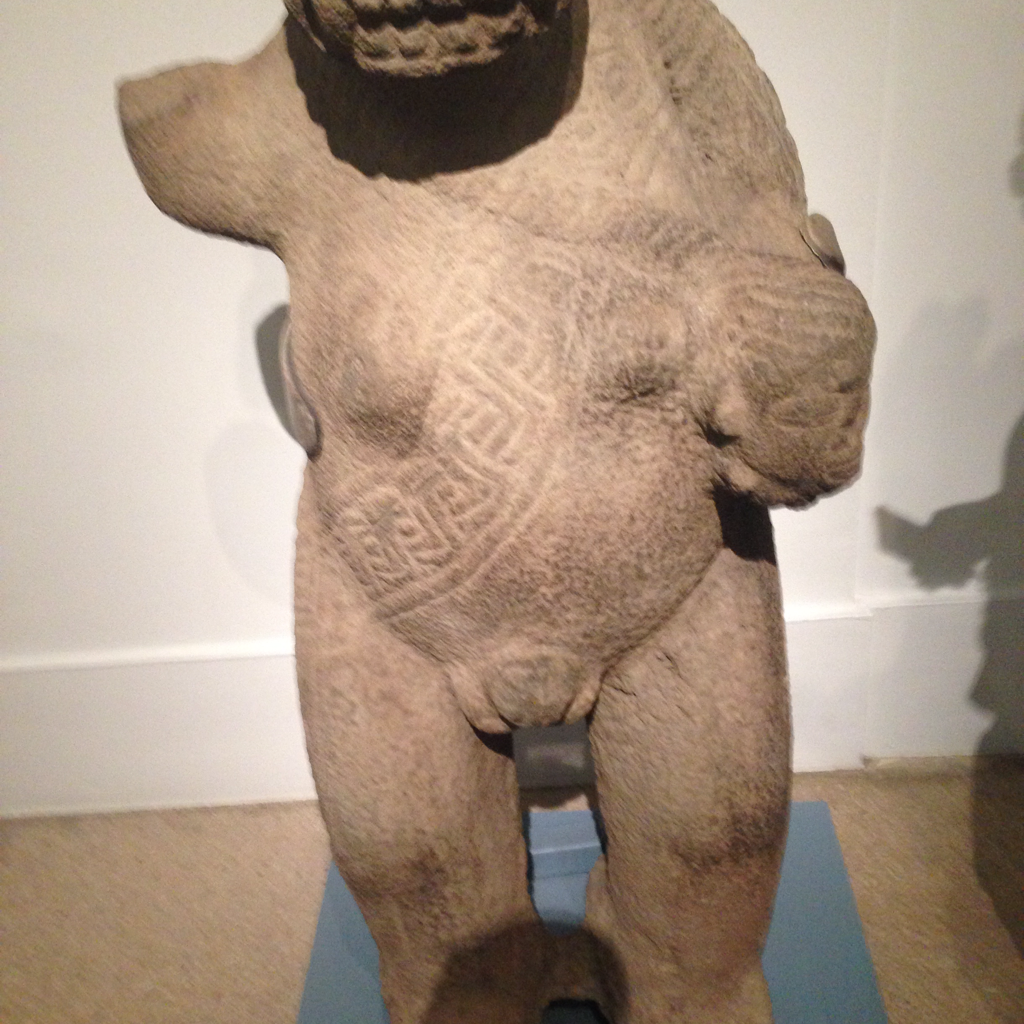
Yes, stone! More specifically it is made of Vesicular andesite. It was made between the 8th and 11th century by the indigenous people of the Central Caribbean. It represents a male warrior wearing a crocodile mask.
Why is he holding a human head in his hand?
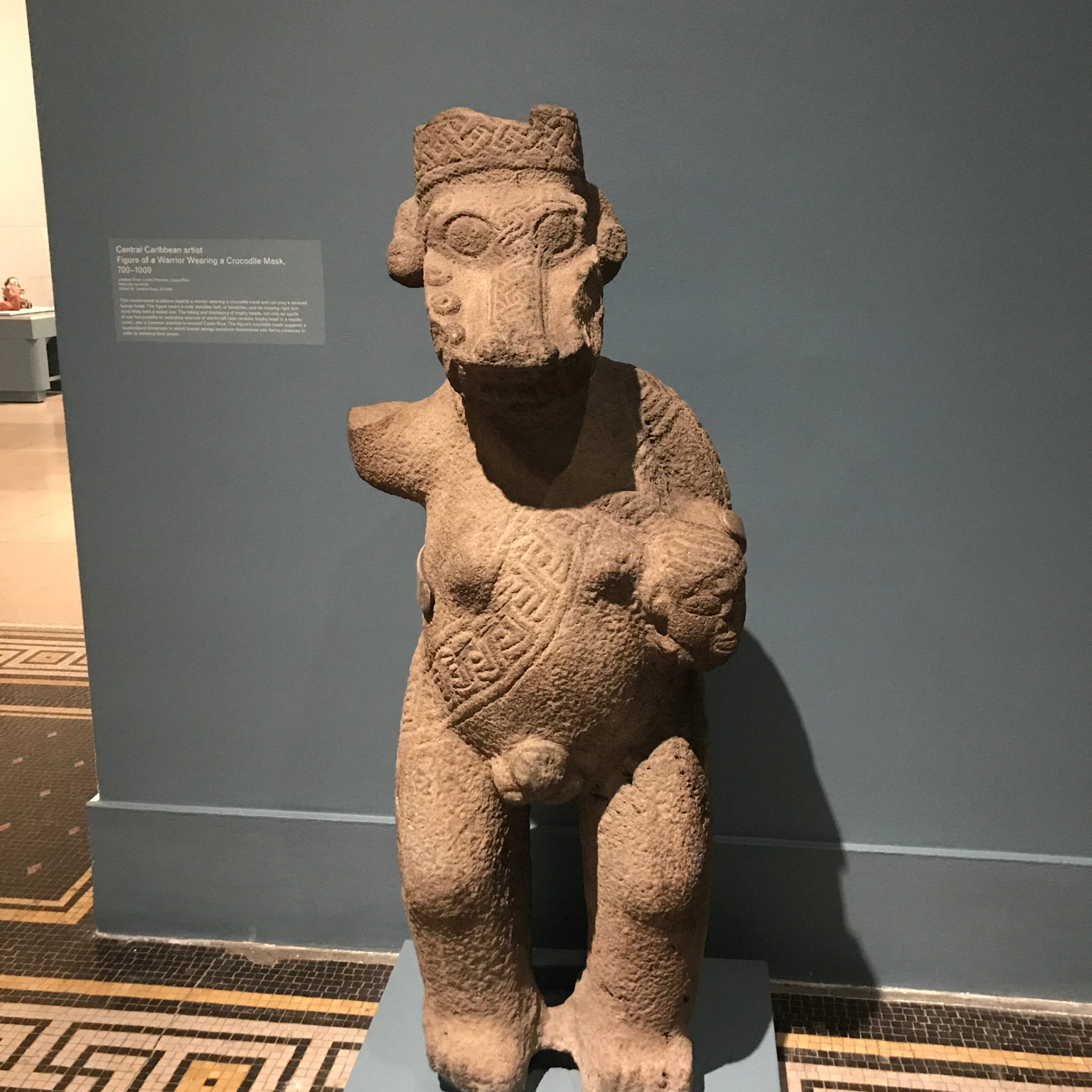
The head in his hand is identified as a "severed human trophy head." The taking of trophy heads was a common practice in several Caribbean and South American cultures and was often linked with warfare and religious ritual
